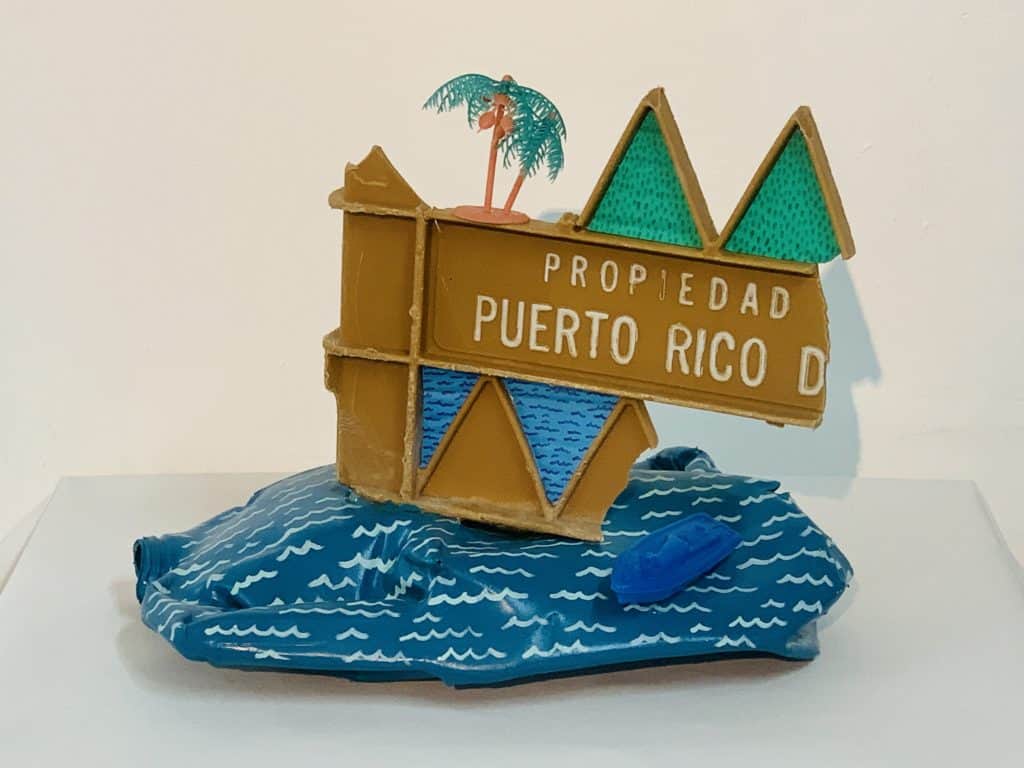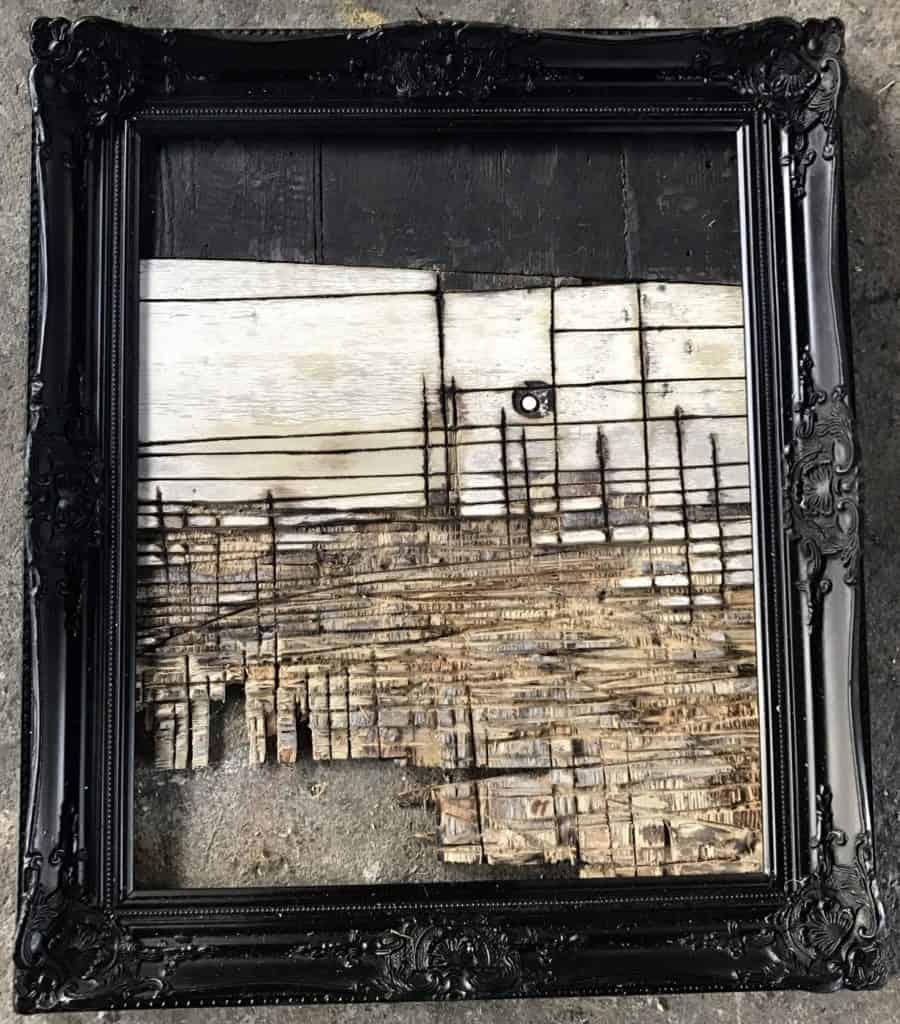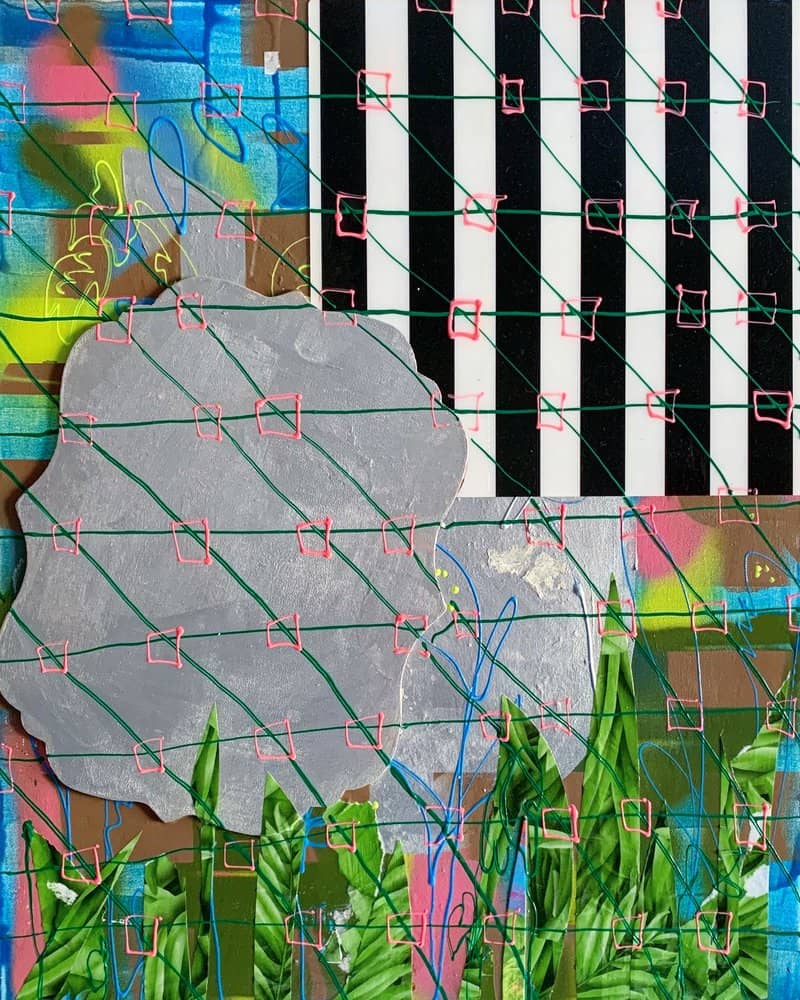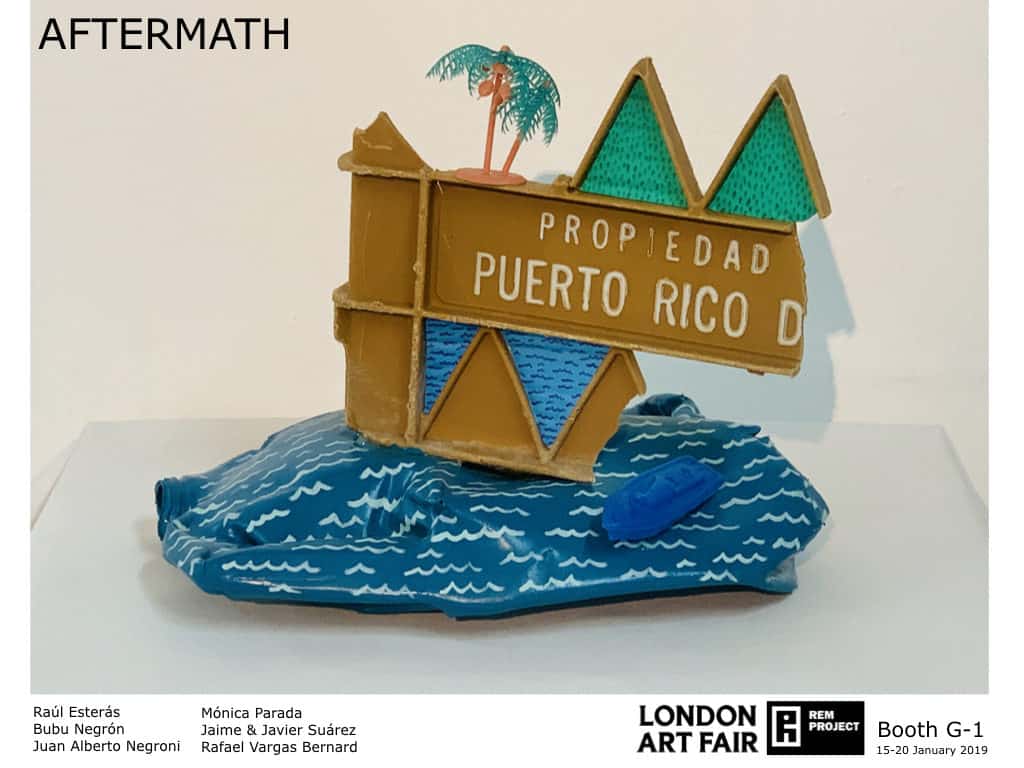By Carlos Ortiz Burgos, Curator
15 – 20 January 2019.

Even though the term “disaster capitalism” was coined less than ten years ago, this is a theme Puerto Rican artists have touched upon for decades from diverse perspectives. However, they had to wait until after a terrible atmospheric phenomenon hit the Island to bare before the eyes of the world the financial and social crisis of the smallest of the Greater Antilles. Puerto Rico is a territory in the Caribbean with a very specific situation: a colony of the United States, which constitutes a reflection of the supremacy that presently drives the global resurgence of the fascist far right.
“Aftermath” joins a diverse ensemble of artists, a sample of the Island’s artistic reality over a year after the passage of Hurricane María. A complex reality in a climatic, economic, political, and social level, that hindered the recovery efforts after the disastrous cyclone, but has driven creative talents to understand meddling of these matters in the international front.

Facing the established conditions, artists like Juan Alberto Negroni, Mónica Parada and the brothers Javier and Jaime Suárez, have reaffirmed themselves in the need to create objects capable of leading us to question and reassess the paradisiac image of the Caribbean islands. Negroni confronts us with an unrecognizably deconstructed Caribbean landscape: cut into pieces and reorganized by human hands. With irony as strategy, Mónica Parada recreates this purported paradise using plastic trash picked up from a beach. On the other hand, the Suárez brothers make use of a poetic production to propose a firm and definitive cease and desist of our participation in climate change. A change that promises to cause hurricanes much more terrible than María and at a higher frequency in this area.
In the midst of the suffering and the difficult recovery process after the worst hurricane in their recent history, Puerto Ricans witnessed the profiting of supporters of neoliberal capitalism, attaining multimillion contracts with the local government and with the approval of the American federal government. This highlighted the state of mind of a segment for whom the financial/legal obligation of the government debt weighs heavier than the quality of life of millions of people. The defective system that allows this kind of corrupt operation is one of the subjects of study of Rafael Vargas Bernard. Inviting the public to interact -literally making them part of the problem- Vargas Bernard synthetizes this kind of fraudulent structure through computer systems or tricked machines that lead to ambivalent operations.

In “Aftermath”, other topics, like gender problems, manipulation of the masses, and the collective anxiety, meet with multiple plastic explorations and esthetic solutions that place Puerto Rico’s situation in a globalized context without losing its Caribbean perspective. The strategies used to achieve this go from irony and sarcasm in some of Mónica Parada’s work, to the use of folklore and national identity as marketing ploys in the production of Jesús “Bubu” Negrón. This way, each work is monographic but each subject interconnect with the next, creating a sort of screenshot of local interactions as part of an international ensemble.
As an interpretation of reality, contemporary art cannot be less than heterogenous, and, in Puerto Rico, it is full of approximations to national and international problems. Notwithstanding, art never stops taking care of its own problems. Even though the works of Ivelisse Jiménez and Raúl Esterás gravitate towards specific themes, their respective techniques and compositions respond to the intellect’s thirst to investigate the forms to achieve an order, a composition capable of making us experiment another kind of approach to reality. Before a prolonged state of emergency, it was imperative in Puerto Rico to lay out again the position of art in times of crisis. Making art a trench, these artists oppose the relaxation and sedition of those that feel handtied or that simply ignore the problems because they think these do not affect them directly. And this is because works of art have come to help us understand that which the mass media -in the times of “fake news”- has made more difficult for us: invite us to analyze, to consider other perspectives, to give space for thought. Carlos Ortiz Burgos January 10, 2019 San Juan, Puerto Rico

REM Project is proud to announce the qualification to participate in the 31st. Edition of London Art Fair 2019. If you are in London stop by Booth G-1.
